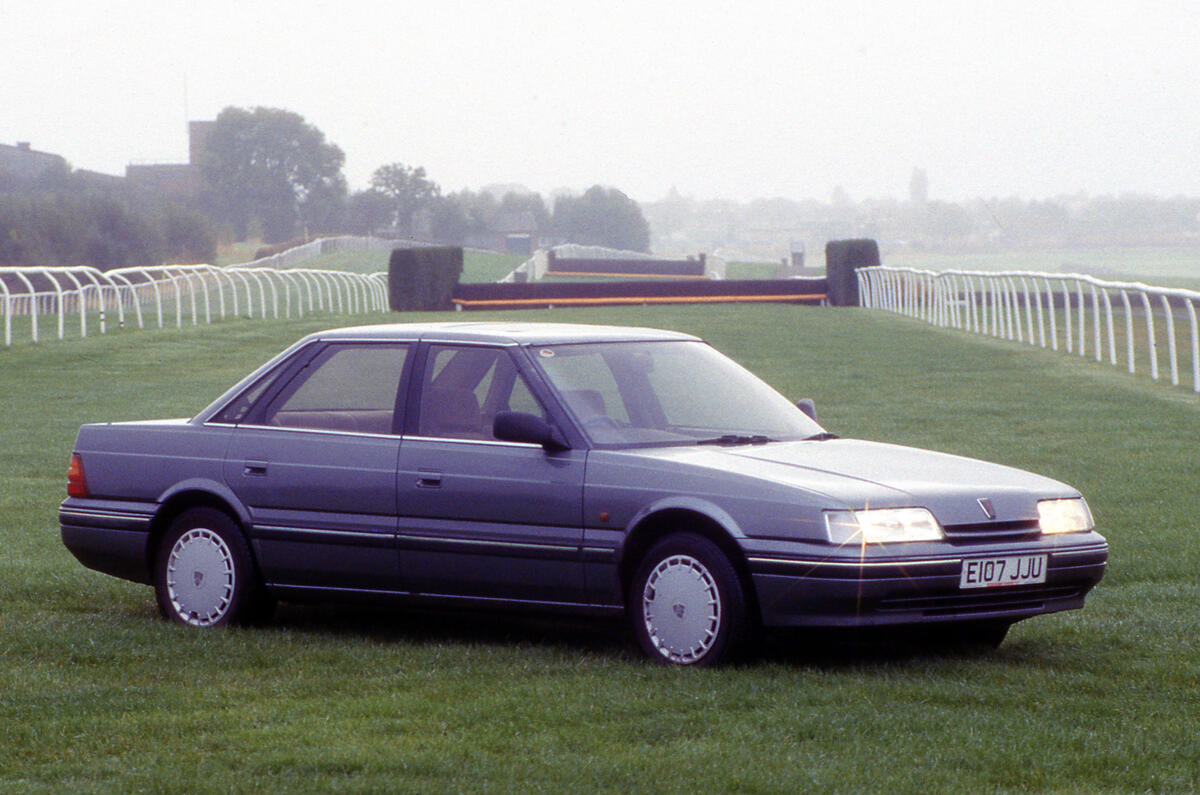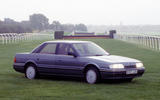When Rover launched its 800 Series executive saloon in 1986, its engine range consisted of 2.0-litre and 2.5-litre petrol engines.
In 1988, along came a far more performance-oriented version – the 827 SLi, complete with a 2.7-litre Honda V6, “the engine it always deserved, giving the Rover 177bhp of power, 168lb ft of torque, a top speed of 131mph, and a 0-60mph time of 8.4sec.
On 2 March of that year, Autocar took one for a spin to see if Rover had built a car that could successfully take on sporty saloons, such as the Saab 9000 Turbo 16 and Vauxhall Carlton GSi.
Along with the new engine, the car had a four-speed automatic gearbox, while its aforementioned rivals were manuals. This gave the 827 SLi Sport and Normal shift settings.
“The new electronically controlled gearbox has closer ratios than before and at the same time, Rover has lowered the overall gearing from 25mph per 1000rpm to 21.3mph,” we said.
“Combined with the bigger engine this has made the car very quick off the mark for an automatic in this class – the 827 will spin its wheels easily on the throttle in the dry and reach 30mph in only 3.3sec.
“In the gears the acceleration is equally impressive, 60-80mph in third, taking 6.3sec against 8.9 for the [six cylinder, 2.5-litre-engined Rover] 825.”
It was just a shame that this knocked down fuel economy to an average of 17.9mpg in our test.
The gearbox was smooth shifting too, even when changing down, and gave “reasonable engine braking on the overrun.”
The Rover’s front-ventilated disc brakes, meanwhile, were also top notch. “They provide progressive and powerful retardation up to a 1.1g before the optional anti-lock comes into effect.” They came through fade tests with “flying colours,” too.
No changes were made to the 800 Series’ chassis for this bigger-engined model, but the car had inherent grip anyway, meaning you could “hustle it around with an agility that seems at odds with its size and 1400kg kerb weight. Pushed hard it can be made to understeer markedly, but lift-off the throttle in a bend and there’s not a trace of oversteer.
“Honda’s speed-sensitive steering gives the Rover good feel and excellent stability at high speed, yet it is much lighter at low speeds – perhaps, we suspect, too light for some tastes.” It had flaws, though: “It can still appear confused about the level of power assistance is required when the Rover is slowed rapidly from speed – the steering remaining heavy until the system has had time to catch up.”
Ride too was excellent, keeping firm on the motorway and isolating potholes well. It wasn’t as good as the Jaguar XJ6 in this respect, but equalled the German executive cars of the day.











Join the debate
Add your comment
This made my day
This made my day
I miss Rover very much - today's obsession with rock hard rides, and dark plasticy interiors depresses me. At the time of rubbish lime Escorts etc, a Rover was a joy, with comfortable interiors, and warming woods. Yet they were rubbished as old fashioned.
What makes me laugh is that even today car makers still use leather/wood to denote a high end model, because, well, really nothing works!
There were some dreadful mistakes made, to the detriment of thousands of loyal workers, and BMW must shoulder some of the blame. But probably the biggest blame lies with the British motoring press. I've lost count of the number of people, fed on a diet of "rubbish Rover" who have loved traveling in one of my Rovers, and said "I didn't know they were lime this!"
Not owned,